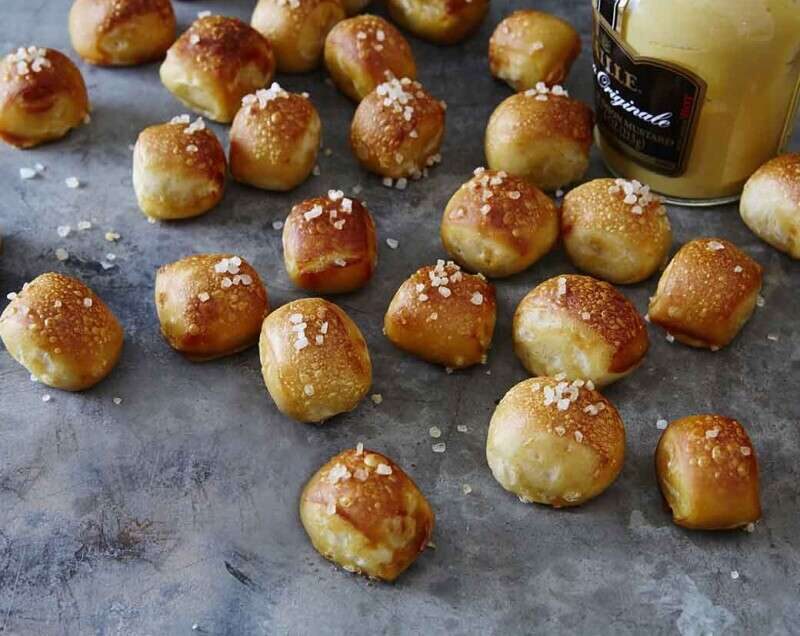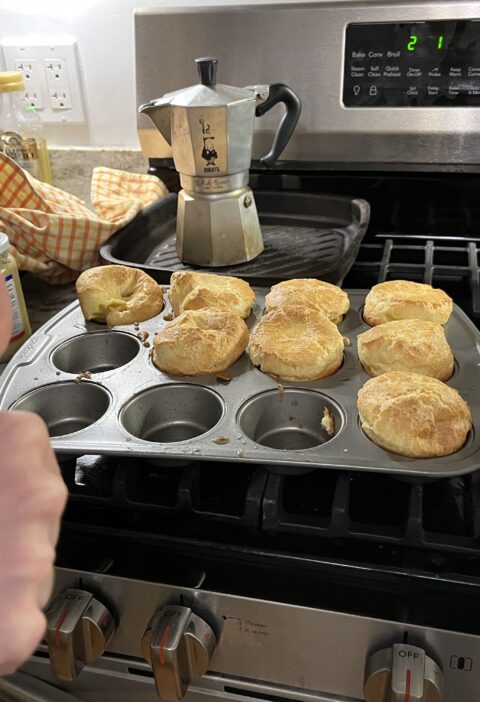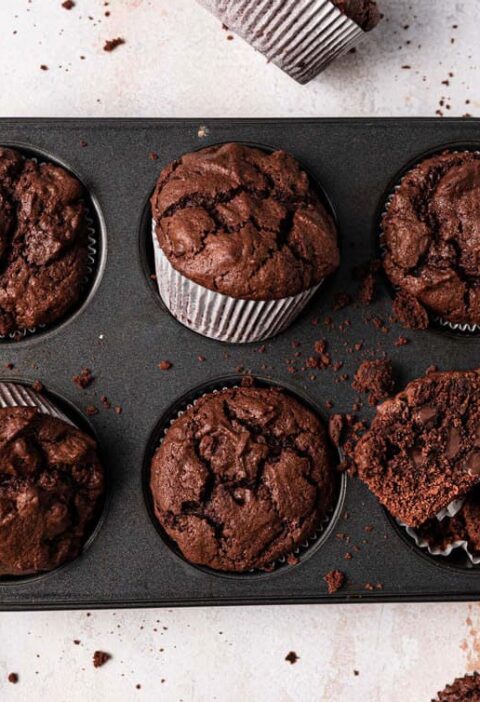Scientific Method of Soft Pretzels:
The order in which we craft a recipe is vital. After all, baking is chemistry. This recipe follows the method of adding dry ingredients to wet ingredients. The recipe starts with warm water to properly dissolve the yeast (our biological leavening agent), then mixing: sugar, salt, butter, and our all-purpose flour. We add them in this order, as if not, there could be possible clumping of our liquids.
Once the dough is formed, we knead it for only a few minutes until it bounces back when we poke it. If we were to knead for an extended period of time, we might end up with a dough that’s too hard, thus immovable. And for our “bitesize” result, we need to be able to manipulate it to form the shapes that we desire.
For the immersion (boiling) process of our recipe, it is important to know that water officially boils at 212°F for effective convection. We cannot let the water become hotter than this, as doing so will result in too chewy of a texture and that heat being converted into more steam will alter the texture of our pretzel bites in a negative way.
The final baking process we make use of is an oven’s conduction properties in a baking sheet. A baking sheet’s material could hypothetically influence the baking of our product, however, we are going to provide an alternative. We recommend using parchment baking paper for easy clean-up, and unaltered pretzel bites. This will prevent most of the changes that come with using different baking sheets!
Ingredients and Functions:

~ ~ ~ ~ ~ ~ ~ ~ ~ ~ ~ ~ ~ ~ ~ ~ ~ ~ ~ ~ ~ ~ ~ ~ ~ ~ ~ ~ ~ ~ ~ ~ ~ ~ ~ ~ ~
Check out some substitutions we can make, and learn what makes pretzels rise, and what makes them brown!
No baking soda bath or egg wash
Substituting baking soda and honey for yeast
Return to original recipe.


